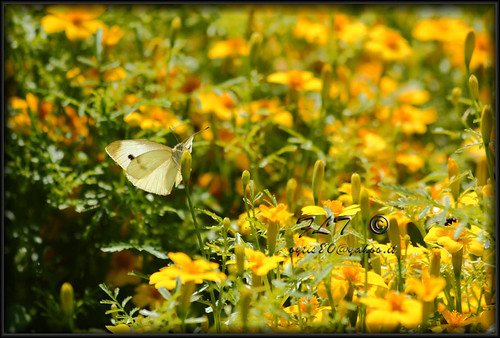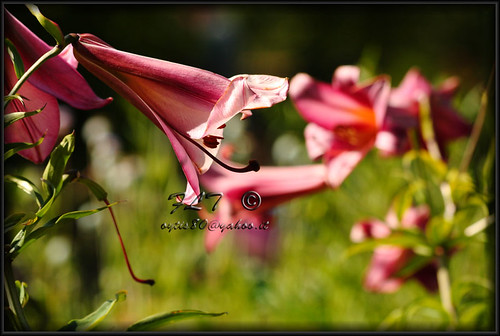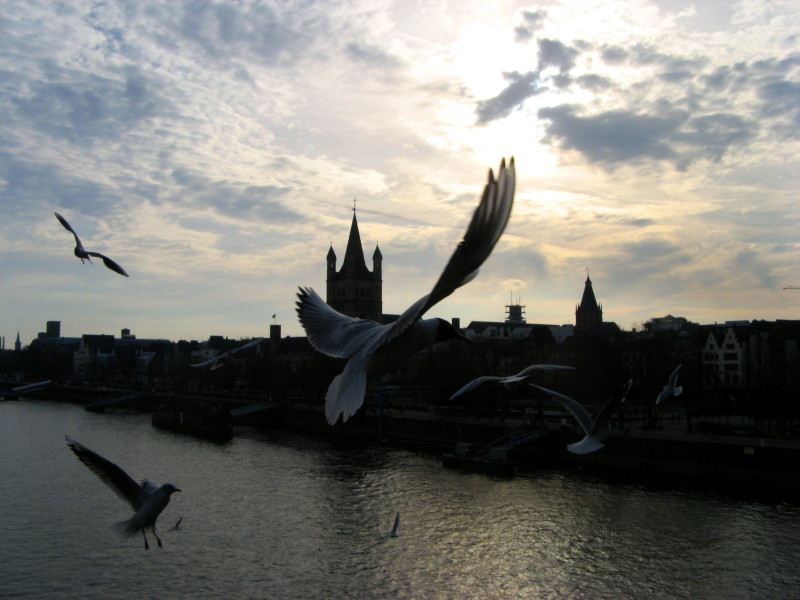EnodasIl mio mondo... |
... "Ma piangerai!" disse il piccolo principe.
"E' certo",disse la volpe.
"Ma allora ch eci guadagni?"
"Ci guadagno", disse la volpe, "il colore del grano".
soggiunse: "Va a rivederele rose. Capirai che la tua è unica al mondo". ...
... "Addio",disse la volpe. "Ecco il mio segreto. E' molto semplice: non si vede bene che col cuore. L'essenziale è invisibile agli occhi".
"L'essenziale è invisibile agli occhi", ripeté il piccolo principe, per ricordarselo.
"E' il tempo che tu hai perduto per la tua rosa che ha fatto la tua rosa così importante".
"E' il tempo che ho perduto per la mia rosa…" sussurrò il piccolo principe per ricordarselo.
"Gli uomini hanno dimenticato questa verità. Ma tu non la devi dimenticare. Tu diventi responsabile per sempre di quello che hai addomesticato. Tu sei responsabile della tua rosa…"
Tutte le foto contenute in questo blog, se non specificato diversamente, sono mie e come tali sono protette da diritto d'autore. Rappresentano un momento, un istante, un'idea un'emozione.
Ho costruito un sito per raccoglierne alcune, e condividere una passione nata e cresciuta negli ultimi anni. Il sito é raggiungibile cliccando l'immagine qui sotto:
browser consigliato per compatibilità: Mozilla FireFox
ultimo aggiornamento: 20 Febbraio 2014
AREA PERSONALE
MENU
I MIEI BLOG AMICI
- shake the world
- Gretaelanuvola
- oliviaspaghetti
- last quarter
- Rosa pequena
- Ocean of sundrops
- Anima Fragile
- myinsideout
- Dolcemente sognando
- volevo essere.......
- Riverbero danima
- Galassia dAndromeda
- Derivalchiarodiluna
- Un altro respiro
- Fairy Daisy
- La Torre dAvorio
- My DoMA CaFE
- Poesia di un sogno
- Una Furtiva Lacrima
- EcATe
- la vita
- Quello che non cè
- tra me e laltra me
- Torno da me...
Non mi piace
l’ipocrisia, l’opportunismo, chi indossa una maschera solo per piacere a qualcuno, l’arroganza, chi pretende di dirmi cosa devo fare, chi giudica, chi ha sempre un problema più grosso del mio, sentirmi tradito, le offese gratuite, i luoghi affollati, essere al centro dell’attenzione, chi non ascolta, chi parla tanto ma poi…, l’invidia, il passato di verdura
- M. Rees -
* * *
- A. Perez-Reverte -
* * * * *
- A. Grunenberg -
* * *
- D. Mereskovskij -
* * * *
- A. de Saint-Exuperi -
* * *
- L. Sepulveda -
* * * * *
Il libro di mia madre
- A. Cohen -
* * *
Il disprezzo
- A. Moravia -
* * * *
Il ritorno del giovane principe
- A.G. Roemmers -
* * *
Suonando...
Albeniz
Granada
Asturias
Beethoven
Sonata n.3 op.10 (n.7)
Sonata op.13 “Patetica” (n.8)
Sonata n.2 op.27
“Chiaro di luna” (n.14)
Sonata op.53 “Waldstein” (n.21)
Chopin
Notturni
Debussy
Suite Bergamasque
Deux Arabesques
Liszt
Valse Oublièe
Valse Impromptu
Schubert
Impromptu n.3 op.90
Impromptu n.2 op.142
| « . | . » |
.
Post n°562 pubblicato il 14 Luglio 2015 da enodas
C'é una farfalla bianca che si mischia tra i fiori. Come un'immagine lontana che riaffiora alla mente. E' la leggerezza dell'anima, quell'essere quasi "insostenibile". E come allora, inseguo, cercando un'immagine da catturare e tenere per me. Che si sovrapponga ad un'altra, in maniera quasi simmetrica, e mi parli di me. Perché, come ho scritto una volta, tanto tempo fa, anche attendere tra steli d'erba cercando di raccogliere un battito d'ali può raccontare qualcosa. Con quella semplicità e quella fragilità che é racchiusa in quel volo. Ed una carezza che a volte, in qualche parte nascosta del cuore, hai sperato di ricevere. Torno ad un messaggio scritto molti anni fa, dove mi rivedo, proprio qui, proprio sfiorando quasi gli stessi fiori, respirandone il profumo simile. Qua dove tutto sembra invisibile, nascosto nei colori sgargianti che esplodono in un giardino fatto di minuscoli sentieri allineati, arcate di fiori e specchi d'acqua silenziosi. E' uno di quei luoghi dell'anima che, una volta scoperti, rimangono per sempre.
Qualcosa di un'anima, un po' come quella che si specchiava in un mondo d'acqua e fiori galleggianti e raccoglieva i colori per distribuirli sulla tela. Per raccontare ciò che vedeva, e ciò che ad un certo punto non vedeva più. Allora, é bello e suggestivo immaginare che quest'uomo d'altri tempi dipingesse con l'anima, ed in quegli stessi riflessi annacquasse il pennello che aveva in mano. Oscillano, quasi impercettibilmente, sotto un'onda lieve che sembra un sussulto. Tremano. I petali, le foglie larghe stese sull'acqua, i rami in caduta dei salici. Ed in quello stesso moto lieve si sprigiona tutta la loro preziosa insicurezza. E forse saranno gli occhi stessi ad annacquarsi un po', un istante magari, al pensiero della magia che si concentra dietro questi colori, dentro quegli impasti stesi su tela, come una partitura che non ha finale vero e proprio, ma continua a variare. Una musica costante.
"Vediamo solo quello che vogliamo; é tutta una finzione ma, questa falsità, costituisce l'arte...." "...non comprendono che per me la danza é stata un pretesto per dipingere dei bei tessuti e rendere dei movimenti..."
Degas, an Impressionist Painter? (dalle note all'allestimento temporaneo a Giverny, Luglio 2015)
|
INFO
CONTATTA L'AUTORE
|
Nickname: enodas
|
|
|
|
Età: 44 Prov: VR |
CERCA IN QUESTO BLOG
CHI PUÒ SCRIVERE SUL BLOG
I commenti sono moderati dall'autore del blog, verranno verificati e pubblicati a sua discrezione.
Nell'ultimo anno...





